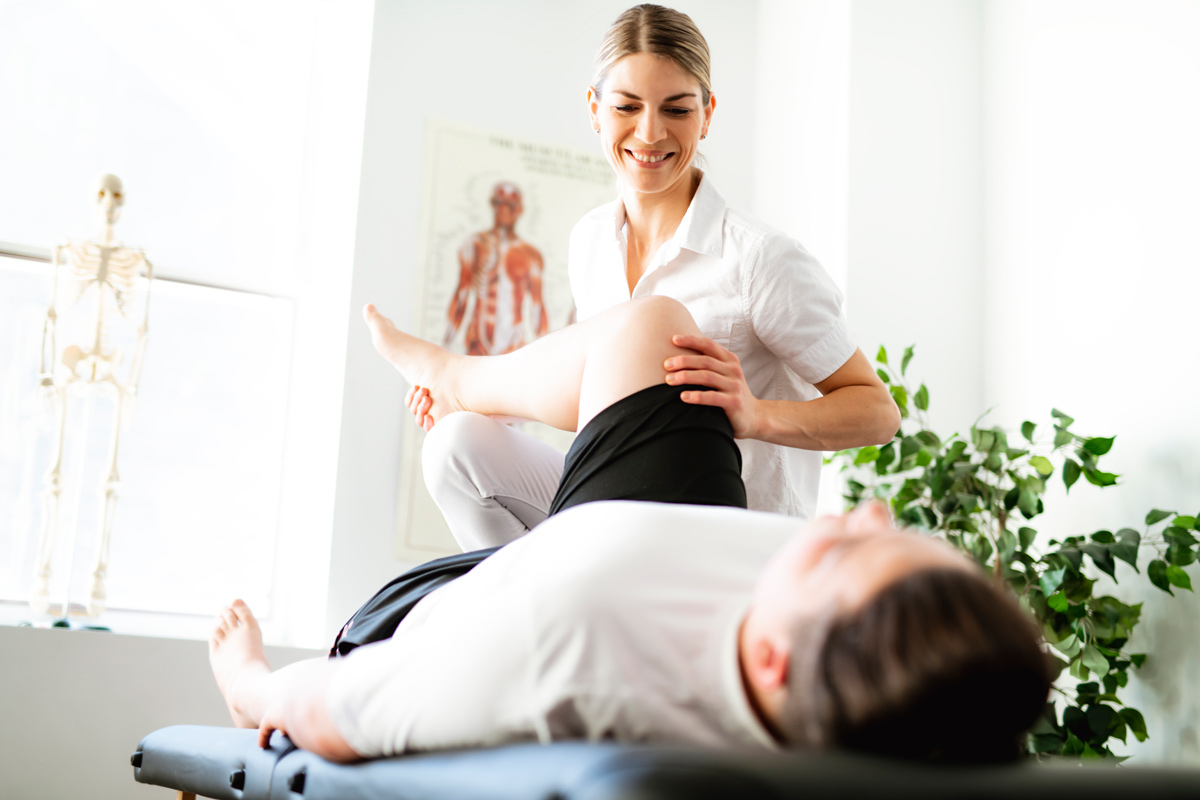OBJECTIVE ASSESSMENT
This is where we put the working hypothesis gained from all the questions we have asked, to the test to establish a diagnosis and guide treatment options. The aim of the objective is to reproduce your symptoms and use the information to guide potential treatment options
Joint
We get you to perform a range of active movements. If they reproduce your symptoms we have strong evidence of to support the diagnosis. If you just perform the movement badly in a way that would potentially overload our theoretically damaged structure, this is weak evidence
We then do a range of passive tests – ie when the therapist moves the joints some times in ways you can move and sometimes in ways you can’t. This gives us information about the quality of the movement as well as the range. How a joint feels when it reaches its end point can tell us about potentially injured structures. As with the active movements, if we can reproduce your symptoms, we have good evidence for our diagnosis, if it just doesn’t feel right, the information is valuable but the evidence is circumstantial
Muscle
With muscle testing we can select an individual muscle or group of muscles and stress them by contracting them against resistance based on their action. If this reproduces your pain it suggests this is the fault. If it is weak and the quality and control is bad compared to the other side, it might be contributing but not be the damaged structure.
We also look at tightness of muscles and tenderness through the muscle
Nerve
We have tests that will tension some of your important nerves individually. These tests passively lengthen and sensitise each nerve i.e. altering length of nerve by a movement at a distance from your symptoms.
If we can reproduce your symptoms with these tests, this is strong evidence that the nerve is involved but sometimes the test is just tight relative to the other side. This is information we store for later.
Here is a video of a physiotherapist David Butler telling showing you how nerves slide and glide
Functional movements
We look at movements that you perform in the course of every day i.e how you walk or run, get from sitting to standing, (squat), step ups, hopping – how you do them and whether they bring on your pain or are they compensating because of the pain.
Once the structures are more clearly identified we have special tests for each joint such as tests which stress certain ligaments or the cartilage in your knee to help confirm the diagnosis.
The other reason that all these movement tests are important is that it gives us something to retest. This shows us how effective our treatment is and how you are progressing.
Reference
Petty NJ, Moore A.P. Principles of Neuromusculoskeletal Treatment and Management. A Guide for Therapists (2004) Churchill Livingstone Edinburgh
Boissonault W.G. Primary Care for the Physical Therapist Examination and Triage (second edition) 2011Elsevier Saunders St Louis Missouri



